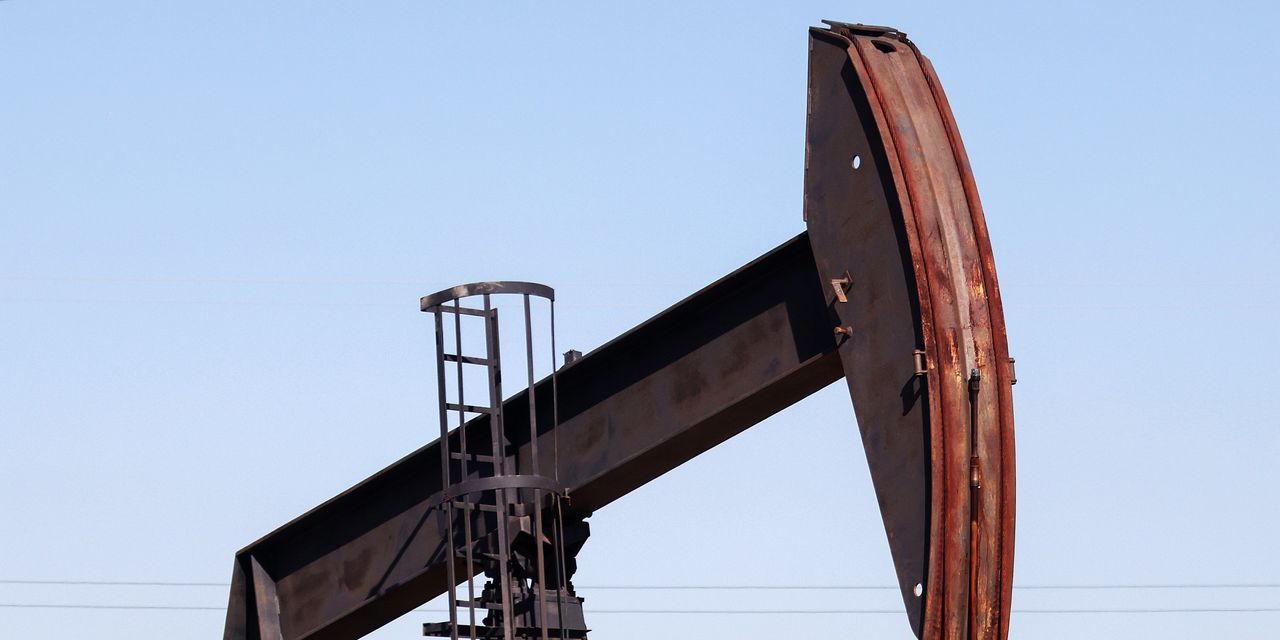Oil futures on Friday mark new highs for the year, tallying a third weekly gain in a row on continued worries over tight supplies.
Price action
-
West Texas Intermediate crude
CL00,
+0.47%
for October delivery
CL.1,
+0.47% CLV23,
+0.47%
rose 61 cents, or 0.7%, to settle at $90.77 a barrel on the New York Mercantile Exchange, settling at their highest since Nov. 7 and scoring a weekly rise of 3.7%, according to Dow Jones Market Data. -
November Brent crude
BRN00,
+0.36% BRNX23,
+0.36% ,
the global benchmark, added 23 cents, or nearly 0.3%, at $93.93 a barrel on ICE Futures Europe, for an advance of 3.6% on the week. -
October gasoline
RBV23,
+0.39%
settled at $2.71 a gallon, down 1.3% for the session though logging a weekly rise of nearly 2.1%. October heating oil
HOV23,
+0.43%
shed 2.8% to $3.38 a gallon, for a weekly rise of 2.6% for the week. -
October natural gas
NGV23,
-0.04%
lost 2.4% to $2.64 per million British thermal units, settling up 1.5% for the week.
Market drivers
WTI and Brent crude on Friday both marked their highest settlements since November.
Read: Consumers take notice as inflation bites and oil prices top $90 a barrel
“$100 is not that far away,” said Edward Moya, senior market analyst at OANDA.
Still, that might “not be a one-way trade as short-term risks to the outlook could shift consumer views and attitudes,” he said in a market update. “The oil market is going to stay tight a while longer, but we might need to see a fresh catalyst to send oil to triple digits.”
““The oil market is going to stay tight a while longer, but we might need to see a fresh catalyst to send oil to triple digits. “”
For now, while fourth quarter oil-supply deficits have been expected for months, recent refinery outages limiting products supplies, and the extension of voluntary supply cuts by Saudi Arabia over the past month have helped push crude prices above some key technical resistance levels, Troy Vincent, senior market analyst at DTN, told MarketWatch.
That’s “opening the door” for prices to move another $5 to $8 a barrel in the coming weeks, he said.
A 1 million-barrel-a-day production cut implemented by Saudi Arabia in July and recently extended through the end of the year, alongside with a supply cut from Russia, have solidified expectations for a growing supply deficit heading into the fourth quarter.
However, “with the U.S. dollar nearing its highs for the year, medium sour crudes from Saudi Arabia already trading over $100 [a barrel], and central banks continuing to raise or hold interest rates at historically high levels, demand should begin to slow as we work through Q4,” said Vincent.
He also pointed out that China, “who has amassed enormous crude stocks over the past year, should begin to lean on inventories built at far cheaper prices and import less crude.”
Read the full article here










